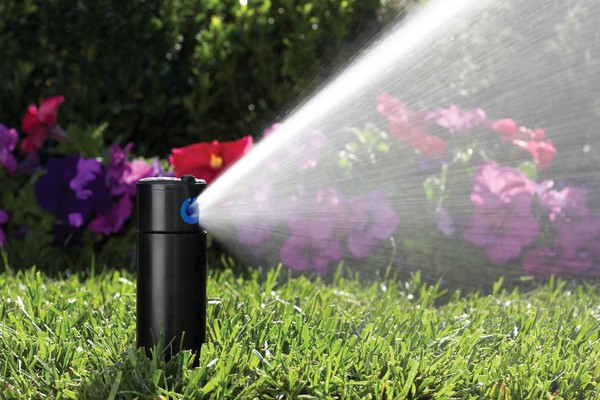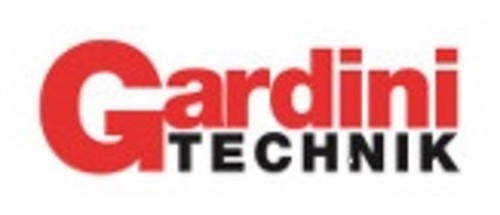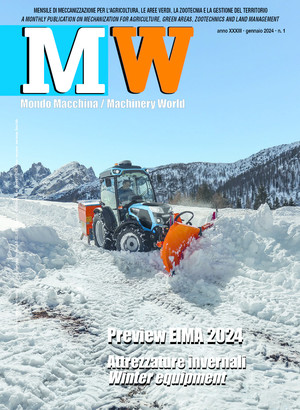
Irrigation controllers for gardening
Horticultural nurseries, greehouses, public and private parks, road trees, gardens, sports fields and golf courses, etc. There are many areas where irrigation controllers are successfully used in conjunction with a wide range of sensors for better management of watering operations
Regardless of the chosen irrigation solution, efficient watering scheduling is absolutely essential in all areas of agriculture and landscape management. The importance of the so-called "control units", with which the water resource is managed, is therefore clear. There are many areas in which irrigation controllers are used to good profit. The following is a basic overview of what the market offers, in professional terms.
|
|
Models for all areas
There are controllers available on the market for a very wide variety of purposes, from watering pots on the balcony to watering several city parks. Obviously, the complexity (and cost) of the models vary enormously, as do the functions and options for management and control.
From the point of view of application, the range goes from the simplest ones, to be applied directly to a tap by means of a threaded fitting, to "all-in-one" models to be installed in the well, to highly computerised ones, often featuring widely programmable software, equipped with a weather control unit and a large set of sensors to monitor the state of the vegetation to be irrigated and the soil that acts as a link between the water distributed and the absorption of the plant root system.
A scheduler (or computerised control unit) is used to manage the number, duration and activation times of individual irrigation operations, and the volume distributed, supporting everything with software that in the most advanced models allows remote control with wireless solutions (including Bluetooth and Wi-Fi), increasingly often also from smartphones with dedicated apps.
A weather station can also be added close to the system, so that weather parameters such as atmospheric pressure, wind direction and speed, and solar radiation intensity can be monitored and the system can be started up only when the crops and/or green vegetation really need water.
Sensors
A wide range of sensors is available to support the advanced control units.
The most common is the 'rain' sprinkler which acts as a simple switch, automatically shutting off irrigation when a certain amount of rain falls. The most common types are based on floats, hygroscopic discs and probe electrodes, sometimes with adjustable trip thresholds.
Float switches have the advantage that they do not require a power supply to operate. Basically, the rain accumulates in a container that contains the sensor, which, by raising it, operates a switch when it reaches the threshold level. After the rain event, the water collected in the container evaporates, and the system returns to its initial conditions.
Hygroscopic discs (made of porous material) work in a similar way, as they do not require electricity to operate. When it rains, they become soaked, and as their volume increases, they exert pressure on a switch, which is activated. When dry conditions return, the discs dry out and reduce in volume, returning the system to its original state.
In the probe sensor, rain accumulates in the tray and the water level rises. When the surface of the accumulation touches the electrodes, causing electricity to circulate between them (as water is a good conductor), the system intervenes and stops irrigation. The water level in the tank is lowered by evaporation, restoring the initial conditions.
Soil moisture sensors are often combined with temperature sensors. Buried a few centimetres deep, they act in the same way as rain sensors, i.e. if they detect a value above a certain threshold (programmable with a special interface to be connected to the control unit) they prevent irrigation. In practice, the humidity and temperature of the soil where the sensor is located are measured continuously, with a typical scan of 10 minutes.
Made of corrosion-resistant metal (typically stainless steel), they have the advantage of being insensitive to soil conductivity, thus adapting to all operating conditions.
In a given irrigation system, the constant control of the water flow rate is a very important parameter to monitor its proper functioning, for example by immediately detecting leaks in the network (due to broken pipes or damaged watering elements) if the measurement falls below a threshold limit. Systems with a higher level of automation automatically "quarantine" the sector where the problem was detected, continuing to irrigate the areas not affected by the fault on a regular basis. Not only that, but in the most complex systems there is also the option of automatically acquiring the typical flow rates of the station, thus obtaining a "data history" that avoids having to manually enter every single piece of data for all the sections on which the system is divided.
Depending on the general availability of water, it is also possible to determine the optimal activation sequence of the station sectors, constantly exploiting the maximum flow capacity, selecting the simultaneous activation of several valves within the predefined hydraulic parameters, thus ultimately resulting in shorter watering times.
In some specific cases, it is particularly beneficial to use the evapotranspiration sensor, which measures the intensity of sunlight and air temperature, to determine the correct seasonal control percentage to send to the controller in order to determine the watering time.
The filtration apparatus
Essential for drip irrigation, solutions for filtering water from solid foreign elements are however also important for other watering techniques, especially where the water does not come from the water mains but is taken directly from wells, canals or lakes, as in this case in addition to sand and organic material there may also be slime and algae. The cartridge of these filters can be mesh, suitable for retaining suspended solids, and normally used for water moderately loaded with impurities, as the filtering surface is relatively limited.
Alternatively, the cartridge can be made up of a stack of plastic discs, whose surface has a series of microscopic grooves, which retain the impurities while allowing the water to flow through, which is pumped with a pressure that helps to keep the discs compressed against each other, thus increasing the effectiveness of the filtration. These filters can be cleaned by removing the cartridge and spraying water on the discs, or automatically by backwashing, as the discs move apart, releasing the retained particles.
Quartz grit filters have a high filtration capacity, able to retain any type of impurity in the water, even when heavily laden with sand, silt and slime.
Slotted candles at the base of the filter retain foreign material; as with disc filters, cleaning is carried out by backwashing with clean water.
The hydrocyclone filter is a sand separator that can be combined with a second disc filter; the operating principle is that the water is conveyed in tangentially to the main axis of the container, creating an internal vortex that by centrifugal force pushes the heavy material towards the walls, which then slides downwards by gravity and collects at the base.
In this case, the speed of the water flow must be sufficiently high to create a valid vortex, in order to obtain a satisfactory separation of the foreign material.
Software
From design to implementation, but above all to system management, software (both for traditional computers and for the latest smartphones and tablets) is a fundamental element of irrigation systems, especially the most complex ones, serving, for example, large public parks or golf greens. The most advanced connectivity for remote management (Bluetooth or wi-fi, or even via the 4G network, and in the future 5G) has opened up new horizons on the versatility and potential of this software, especially for the management phase, but also for monitoring performance and storing operating data.
The use of such options cannot be postponed any longer and will play an increasingly important role in the near future, reducing the human effort to the benefit of a more efficient use of an increasingly precious commodity, water.
Water, an increasingly rare and precious commodity
One of the most negative consequences of climate change is undoubtedly the change in the timing and intensity of rainfall, leading on the one hand to prolonged periods of drought, and on the other to more frequent occurrences of extremely violent and destructive weather phenomena.
As a result, evapotranspiration, i.e. the sum of water lost to the atmosphere through direct evaporation from the soil and transpiration from plants, is increasingly higher than the water available in the soil.
The amount of water a soil can hold depends on many factors, but is essentially based on its texture, organic matter content and structure. The main objectives are to promote water infiltration, so that it is not lost through drainage and surface run-off, and to improve the field capacity of the soil, i.e. the volume that can be stored.
At the same time, the best possible water-saving should be pursued, aiming to maintain soil cover, for example by including cover crops in crop rotations, or mulching so as not to leave bare soil between crops. In any case, irrigation provides the best supply of water during the development and production phases of the crop: irrigated agricultural land in Italy is about 4.7 million hectares, located mainly in the north, while 67% of the water is taken from rivers and only 27% from underground reserves (the remaining 6% from artificial reservoirs).








